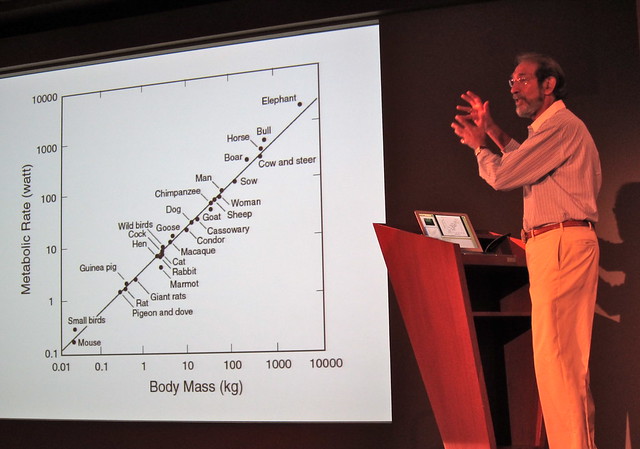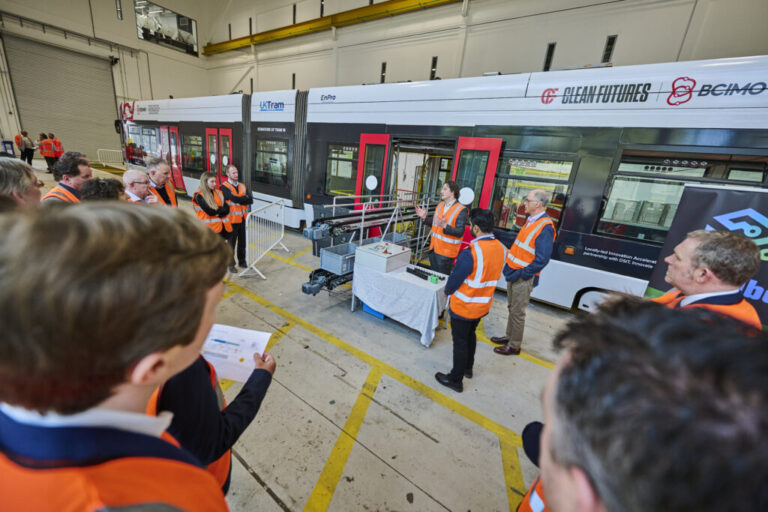Birmingham is making some great progress as a Smarter City this year, with announcements such as the City Deal; the launch of the Green Commission; and investments in ultra-fast broadband infrastructure. And the buzz is spreading. I was one of four speakers in the “Smart Cities” session at the recent Base Cities London conference. All four of us were involved in some form of “Smart” initiative in Birmingham; prompting one of the first questions at the subsequent panel debate to be: “Everyone seems to be working in Birmingham; will it be the world’s next Smart City?”. Of course, my answer was “Yes!”
(In fact, I was even cheekier. I claimed that Birmingham had invented the modern city. Citing the respected urbanist and economist Edward Glaeser I referred to the fact that Matthew Boulton’s commercialisation of James Watt’s uniquely efficient steam engine during the formative years of the Industrial Revolution was a fundamental innovation that led to cities being built “up” around elevators rather than “out” around horses and carts).
There are a variety of historic, scientific and contemporary sources that can inform Birmingham’s approach to reclaiming that role as a world-leading Smarter City innovator. I considered some of them this week in the following post taken from my personal blog, theurbantechnologist.com:

(Photo of Kowloon by Frank Müller)
As I mentioned a couple of weeks ago, I recently read Geoffrey West’s fascinating paper on urban scaling laws, “Growth, innovation, scaling and the pace of life in cities“.
The paper applies to cities techniques that I recall from my Doctoral studies in the Physics and Engineering of Superconducting Devices for studying the emergent properties of self-organising complex systems.
Cities, being composed of 100,000s or millions of human beings with free-will who interact with each other, are clearly examples of such complex systems; and their emergent properties of interest include economic output, levels of crime, and expenditure on maintaining and expanding physical infrastructures.
It’s a less intimidating read than it might sound, and draws fascinating conclusions about the relationship between the size of city populations; their ability to create wealth through innovation; sustainability; and what many of us experience as the increasing speed of modern life.
I’m going to summarise the conclusions the paper draws about the characteristics and behaviour of cities; and then I’d like to challenge us to change them.
Professor West’s paper (which is also summarised in his excellent TED talk) uses empirical techniques to present fascinating insights into how cities have performed in our experience so far; but as I’ve argued before, such conclusions drawn from historic data do not rule out the possibility of cities achieving different levels of performance in the future by undertaking transformations.
That potential to transform city performance is vitally important in the light of West’s most fundamental finding: that the largest, densest cities currently create the most wealth most efficiently. History shows that the most successful models spread, and in this case that could lead us towards the higher end of predictions for the future growth of world population in a society dominated by larger and larger megacities supported by the systems I’ve described in the past as “extreme urbanism“.
I personally don’t find that an appealing vision for our future so I’m keen to pursue alternatives. (Note that Professor West is not advocating limitless city growth either; he’s simply analysing and reporting insights from the available data about cities, and doing it in an innovative and important way. I am absolutely not criticising his work; quite the oppostite – I’m inspired by it).
So here’s an unfairly brief summary of his findings:
- Quantitative measures of the creative performance of cities (such as wealth creation or the number of patents and inventions generated by city populations) – grow faster and faster the more that city size increases.
- Quantitative measures of the cost of city infrastructures grow more slowly as city size increases, because bigger cities can exploit economies of scale to grow more cheaply than smaller cities.
West found that these trends were incredibly consistent across cities of very different sizes. To explain the consistency, he drew an analogy with biology: for almost all animals, characteristics such as metabolic rate and life expectancy vary in a very predictable way according to the size of the animal.

(Photo of Geoffery West describing the scaling laws that determine animal characteristics by Steve Jurvetson). Note that whilst the chart focusses on mammals, the scaling laws are more broadly applicable.
The reason for this is that the performance of the thermodynamic, cardio-vascular and metabolic systems that support most animals in the same way are affected by size. For example, geometry determines that the surface area of small animals is larger compared to their body mass than that of large animals. So smaller animals lose heat through their skin more rapidly than larger animals. They therefore need faster metabolic systems that convert food to replacement heat more rapidly to keep them warm. This puts more pressure on their cardio-vascular systems and in particular their heart muscles, which beat more quickly and wear out sooner. So mice don’t live as long as elephants.
Further, more complex mechanisms are also involved, but they don’t contradict the idea that the emergent properties of biological systems are determined by the relationship between the scale of those systems and the performance of the processes that support them.
Professor West hypothesised that city systems such as transportation and utilities, as well as characteristics of the way that humans interact with each other, would similarly provide the underlying reasons for the urban scaling laws he observed.
Those systems are exactly what we need to affect if we are to change the relationship between city size and performance in the future. Whilst the cardio-vascular systems of animals are not something that animals can change, we absolutely can change the way that city systems behave – in the same way that as human beings we’ve extended our life expectancy through ingenuity in medicine and improvements in standards of living. This is precisely the idea behind Smarter cities.

(A graph from my own PhD thesis showing real experimental data plotted against a theoretical prediction similar to a scaling law. Notice that whilst the theoretical prediction (the smooth line) is a good guide to the experimental data, that each actual data point lies above or below the line, not on it. In most circumstances, theory is only a rough guide to reality.)
The potential to do this is already apparent in West’s paper. In the graphs it presents that plot the performance of individual cities against the predictions of urban scaling laws, the performance of every city varies slightly from the law. Some cities outperform, and some underperform. That’s exactly what we should expect when comparing real data to an analysis of this sort. Whilst the importance of these variations in the context of West’s work is hotly contested, both in biology and in cities, personally I think they are crucial.
In my view, such variations suggest that the best way to interpret the urban scaling laws that Professor West discovered is as a challenge: they set the bar that cities should try to beat.
Cities everywhere are already exploring innovative, sustainable ways to create improvements in the performance of their social, economic and environmental systems. Examples include:
- Programmes that exploit analytic technologies to speed up convergence and innovation across sectors in city economies.
- Engaging individuals, communities and utility providers in the more sustainable use of resources such as energy and water; as Dubuque and Malta have done.
- Encouraging the use of social technologies to increase the rate of interactions which create and exchange value, both in virtual environments and in the real world.
- Exploiting information platforms that provide city stakeholders with more accurate insight into the behaviour of city systems, and consequently with opportunities to create innovative ways to change them; as Dublin are doing.
- Creating local trading systems that encourage the growth of economic activity with local social and environmental benefits.
- Using information and analytics to create more efficient transportation systems that connect people more effectively with each other whilst reducing environmental impact, increasing life expectancy and removing barriers to economic productivity; as Singapore, California and Stockholm are doing.
- Reducing crime rates by using analytics to inform the planning and operations of public safety agencies, as Memphis and Northern Ireland have done, with impressive results.

(Photograph by Meshed Media of Birmingham’s Social Media Cafe, where individuals from every part of the city who have connected online meet face-to-face to discuss their shared interest in social media.)
In all of those cases, cities have used technology effectively to disrupt and transform the behaviour of urban systems. They have all lifted at least some elements of performance above the bar set by urban scaling laws. There are many more examples in cities across the world. In fact, this process has been taking place continuously for as long as cities have existed – as was described recently in a Centre for Cities report on the development and performance of cities in the UK throughout the 20th Century.
(That report contains a specific challenge for Birmingham, by the way. It shows that in the first part of the 20th Century, Birmingham outperformed many UK cities and became prosperous and successful because of the diversity of its industries – famously expressed as the “city of a thousand trades”. In the latter part of the Century, however, as Birmingham became more dependent on an automotive industry that subsequently declined, the city lost a lot of ground. So the great steps that we are beginning to take here are vitally important in order to re-create a more vibrant, diverse, innovative and successful economy).
As cities everywhere emulate successful innovations, though, they will of course reset the bar of expected performance. Cities that wish to consistently outperform others will need to constantly generate new innovations.
This is where I’ll bring in another idea from physics – the concept of a phase change. A phase change occurs when a system passes a tipping point and suddenly switches from one type of behaviour to another. This is what happens when the temperature of water in a kettle rises from 98 to 99 to 100 degrees Centigrade and water – which is heavy and stays in the bottom of the kettle – changes to steam – which is light and rises out of the kettle’s spout. The “phase change” in this example is the transformation of a volume of water from a liquid to a gas through the process of boiling.
So the big question is: as we change the way that city systems behave, will we eventually encounter a phase change that breaks West’s fundamental finding that the largest cities create the most value most efficiently? For example, will we find new technologies for communication and collaboration that enable networks of people spread across thousands of miles of countryside or ocean to be as efficiently creative as the dense networks of people living in megacities?
I certainly hope so; because unless we can break the link between the size and the success of cities, I worry that the trend towards larger and larger cities and increasing global population will continue and eventually reach levels that will be difficult or impossible to maintain. West apparently agrees; in an interview with the New York Times, which provides an excellent review of his work, he stated that “The only thing that stops the superlinear equations is when we run out of something we need. And so the growth slows down. If nothing else changes, the system will eventually start to collapse.”
But I’m an optimist; so I look forward to the amazing innovations we’re all going to create that will break the laws of urban scaling and offer us a more attractive and sustainable future. It’s incredibly important that we find them.
(I’d like to think Dr. Pam Waddell, the Director of Birmingham Science City, for her helpful comments during my preparation of this post).





